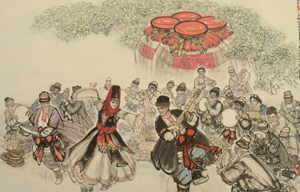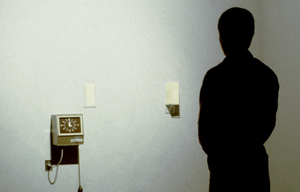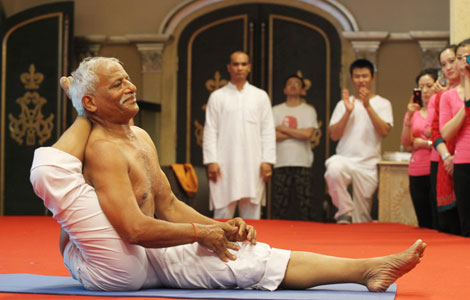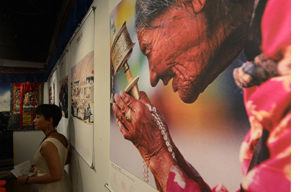

London, July 19 -- The paintings of a ground-breaking and renegade woman artist of international importance are the subject of a new exhibition at Britain's National Portrait Gallery (NPG).
Related: London gets rare glimpse at ancient Chinese art
The exhibition looks at the works of Laura Knight, a painter who worked through the first 60 years of the last century and became the first woman artist to be made a full member of the Royal Academy, which is the major art institution at the heart of visual arts in Britain.
Rosie Broadley, the exhibition curator, told Xinhua on Friday "Knight was a very important, well-known and popular artist in her lifetime, and for those reasons she is an historically important artist."
"She was the first woman to be made a full member of the Royal Academy since its foundation, when there had been women founding members," said Broadley, adding this "reflects that she had a great deal of career success."
Knight, who was born into a working class family in the industrial Midlands of Britain in 1877, was written about by contemporary journalists as a progressive artist, and one of the foremost women artists of her day, said Broadley.
"She is not a modernist artist, which is why some of her contemporary critics and some now do not consider her to be terribly important or influential. She is a traditional realist painter and painted modern life with a unique perspective," Broadley explained.
Broadley said that Knight's importance now was that she painted subjects which other painters did not - notably people on the fringes of society in her time such as gypsies, black people in the United States, and the working class at work.
"Knight presents a unique picture of modern Britain and America from her unique perspective. She is kind of a renegade -- working in a very isolated position as a woman," said Broadley.
Knight never became a member of a group or circle of artists, such as the famous Bloomsbury Group or the Modernists.
Broadley said: "She was working class and out of step with the more privileged artists and the more privileged art world at the time."
"That comes across in her pictures, she paints the world of the working person with empathy because that is where she comes from herself," she added.
In the Second World War, she was appointed as a war artist, and produced memorable work in a realist style that borrowed a lot from the images of cinema, and from the bright color palette of the post-Impressionists, of the saturated color films of the time and of British artist Roger Fry.
Knight lived to a great old age, dying in 1970 at the age of 93, having become Dame Laura Knight for her achievements.
She also lived long enough to see her work pass out of fashion among a more self-consciously rebellious generation of post-war artists and critics.
"In her later years she was seen as a remarkable throwback, an incredibly old lady working away in a loveably eccentric way. Her work was seen as irrelevant and she was seen as unintellectual, straightforward and uninteresting. That was how she came to be dismissed," she said.
Broadley hoped that this NPG exhibition will go some way towards restoring Knight to her place in the ranks of international painters.
Internationally, Knight's reputation is being reassessed, with an exhibition of her work currently running in the the United States.
The exhibition opened last week with over 30 Laura Knight's works opened to the public, which reveal Knight's highly distinctive and vivid work, and also illustrate her success in gaining greater professional recognition for women in the arts.
The exhibition will run at the NPG in central London until October 13 and then goes on show in the northern English city of Newcastle, and after that in the southern port city of Plymouth.



